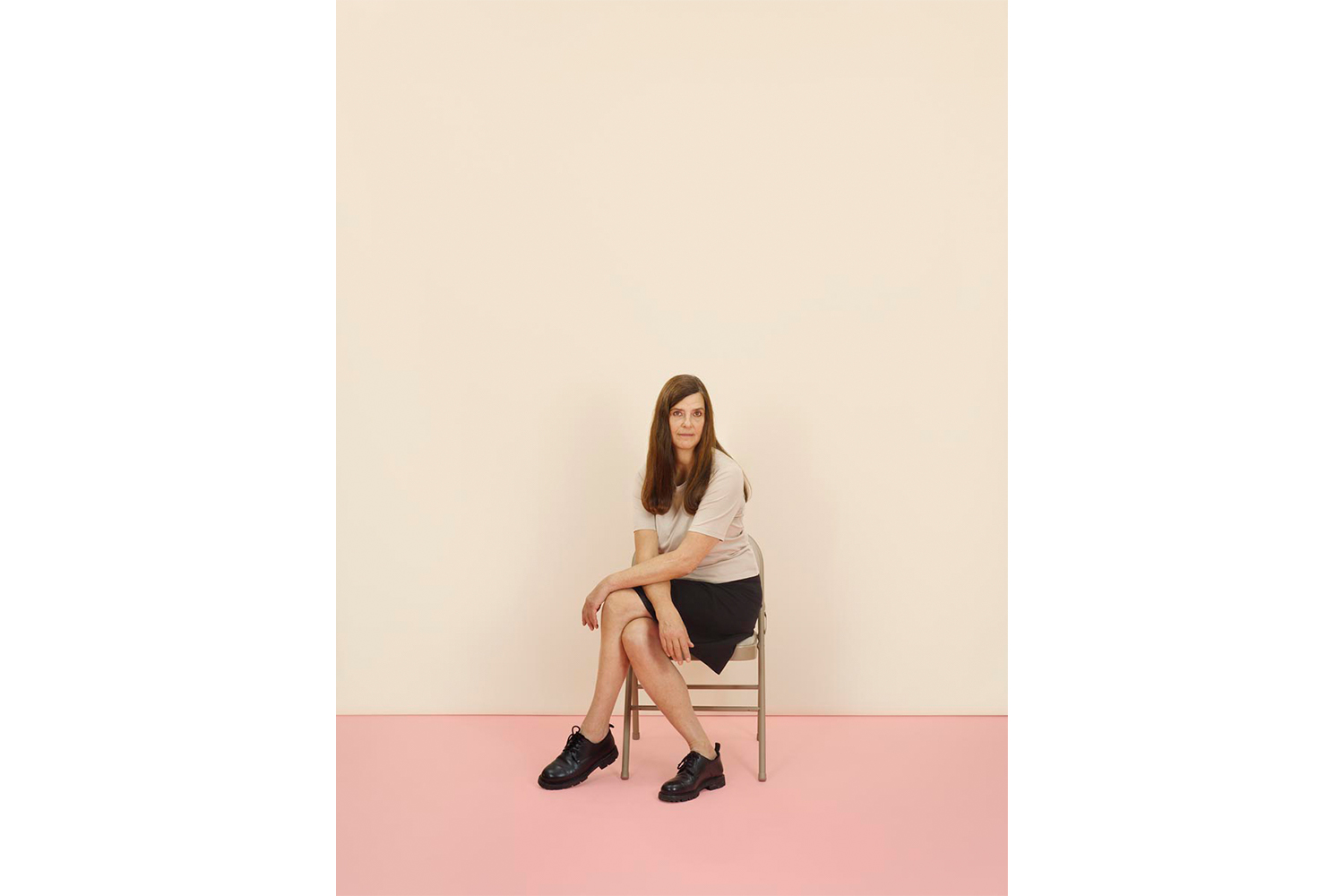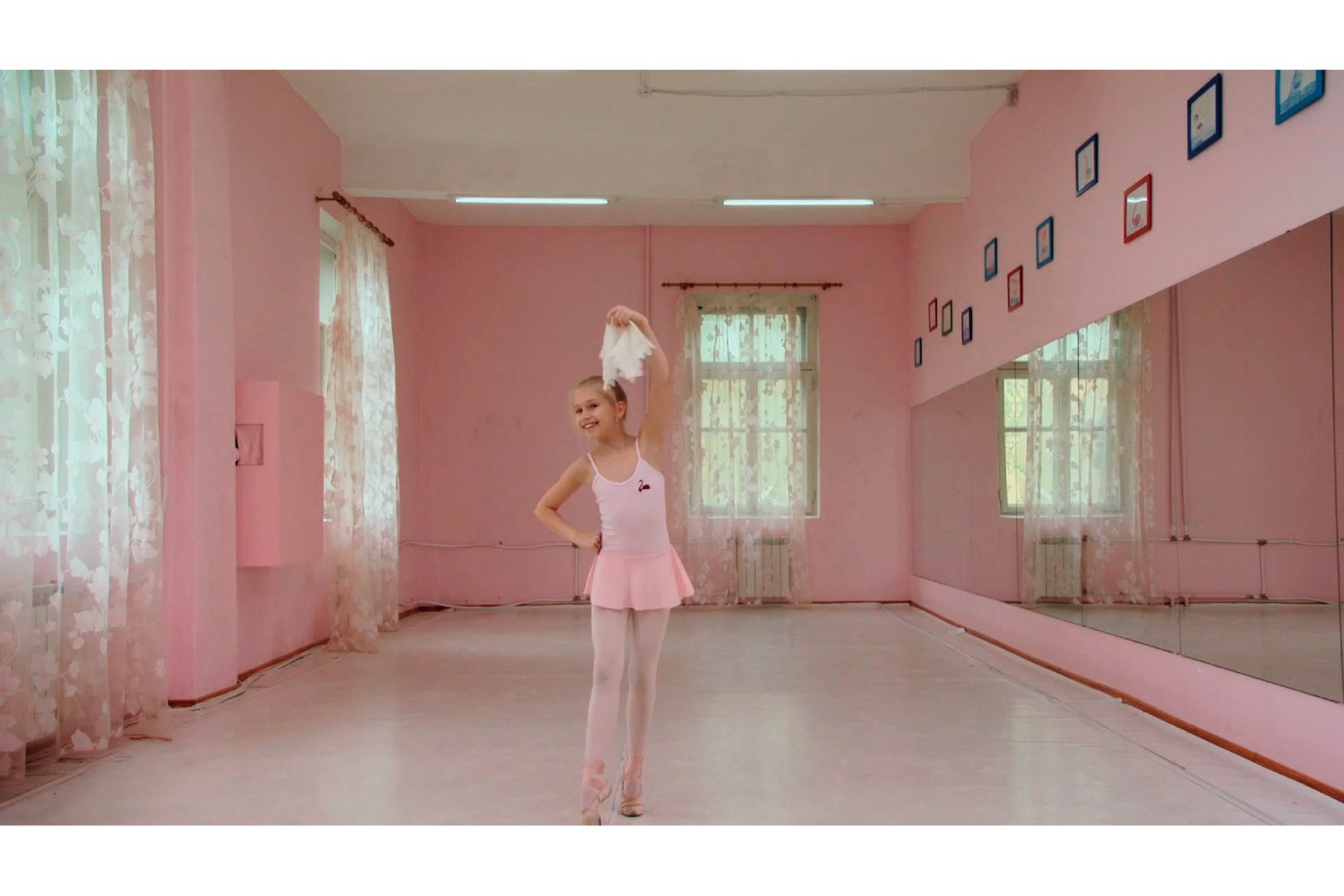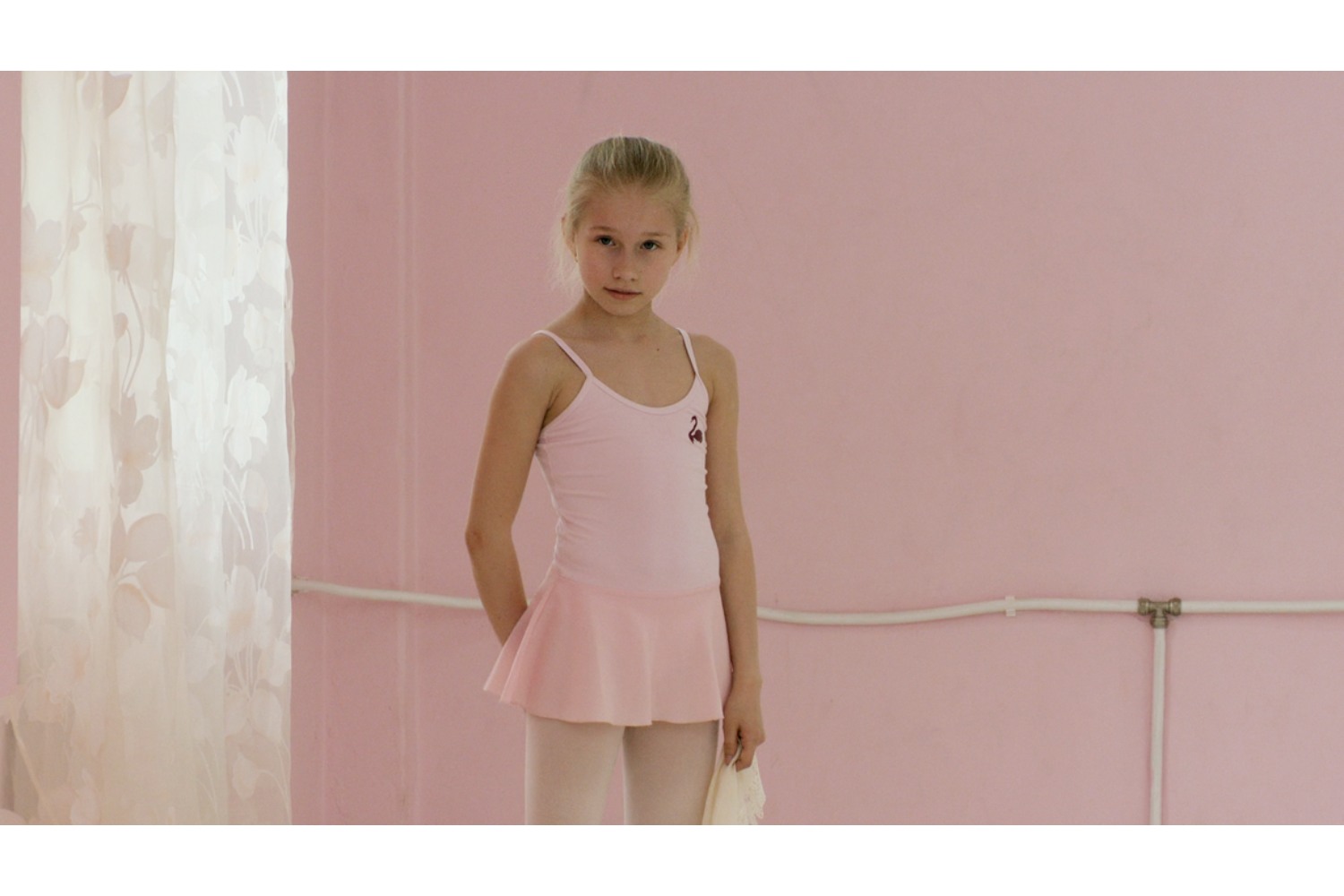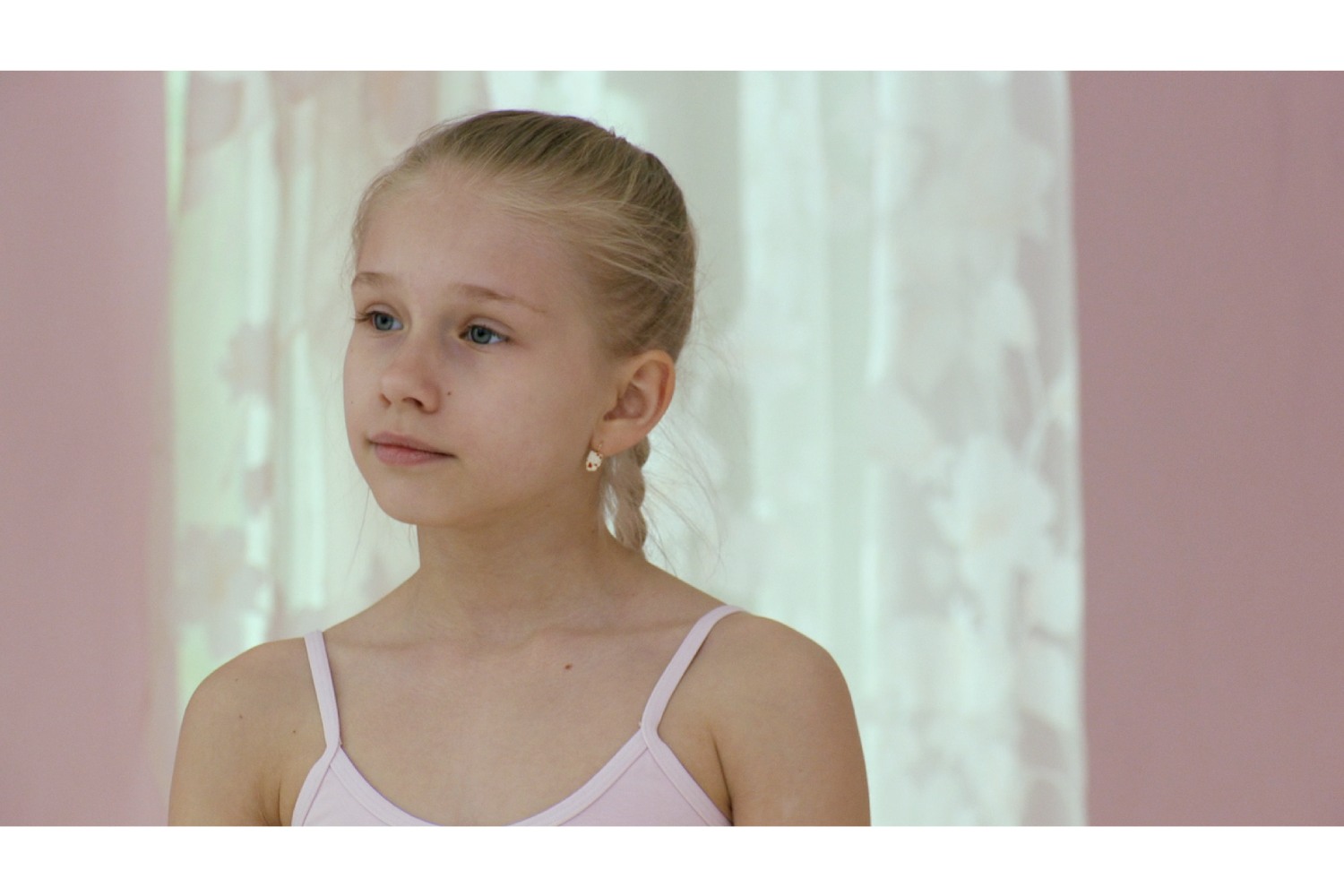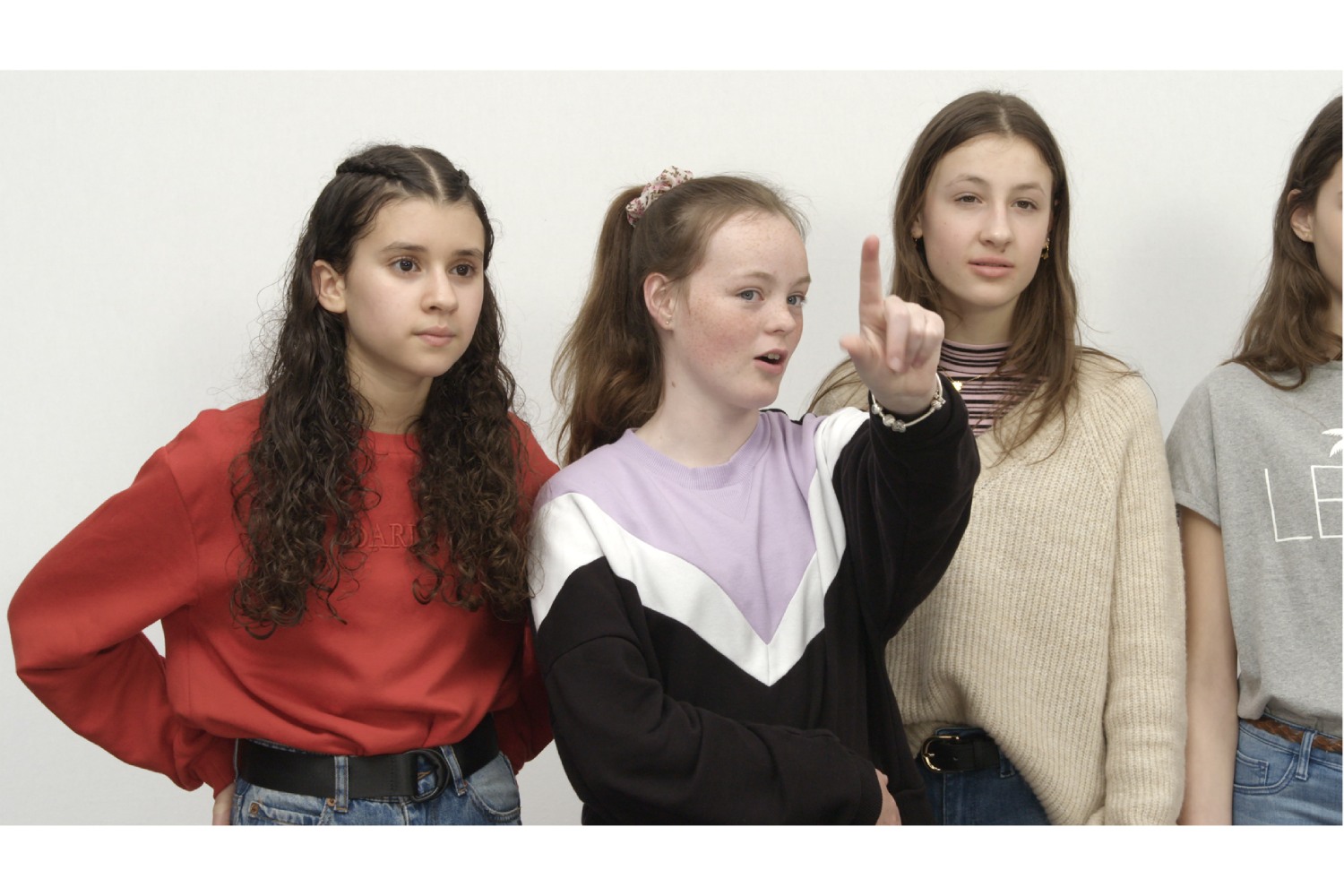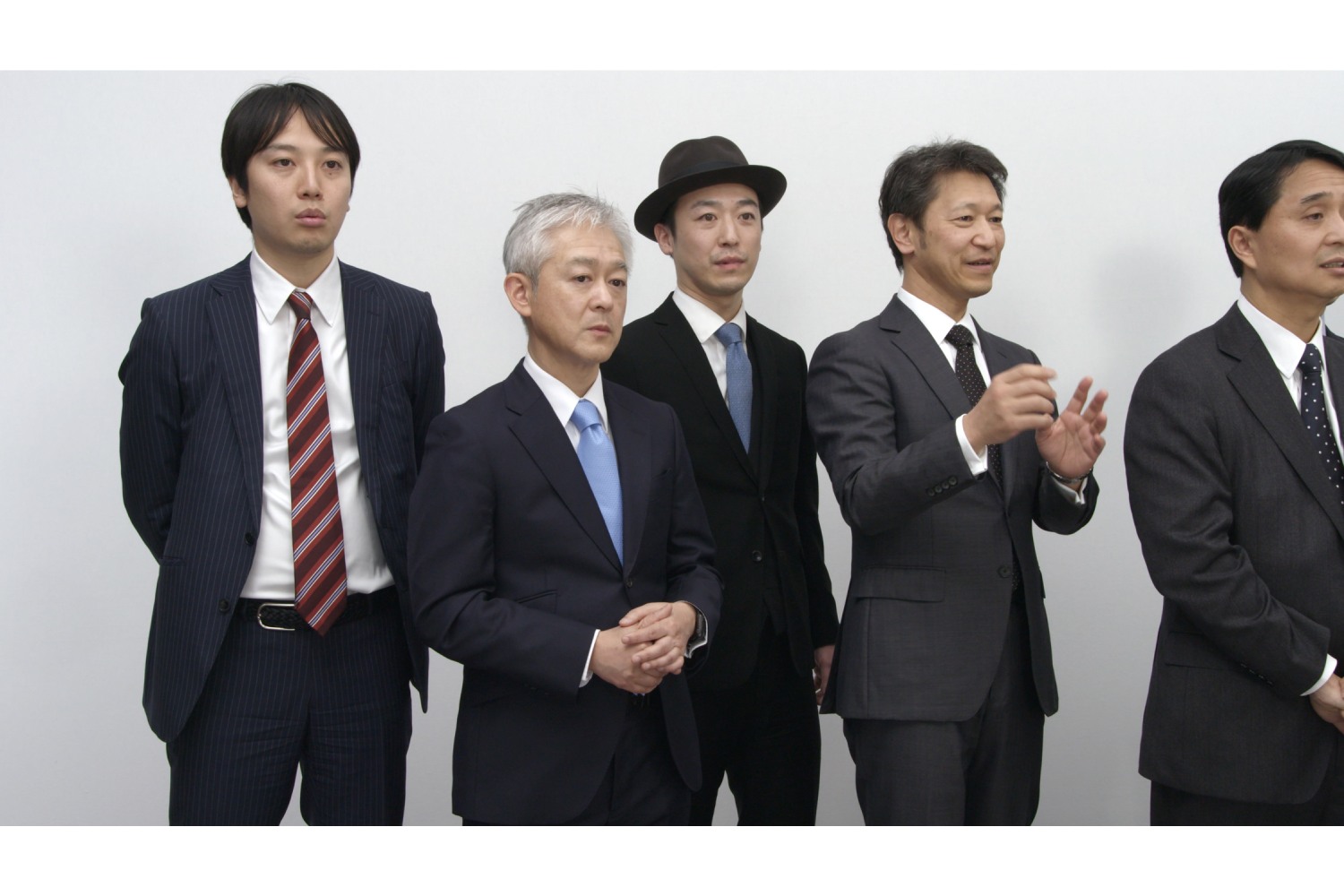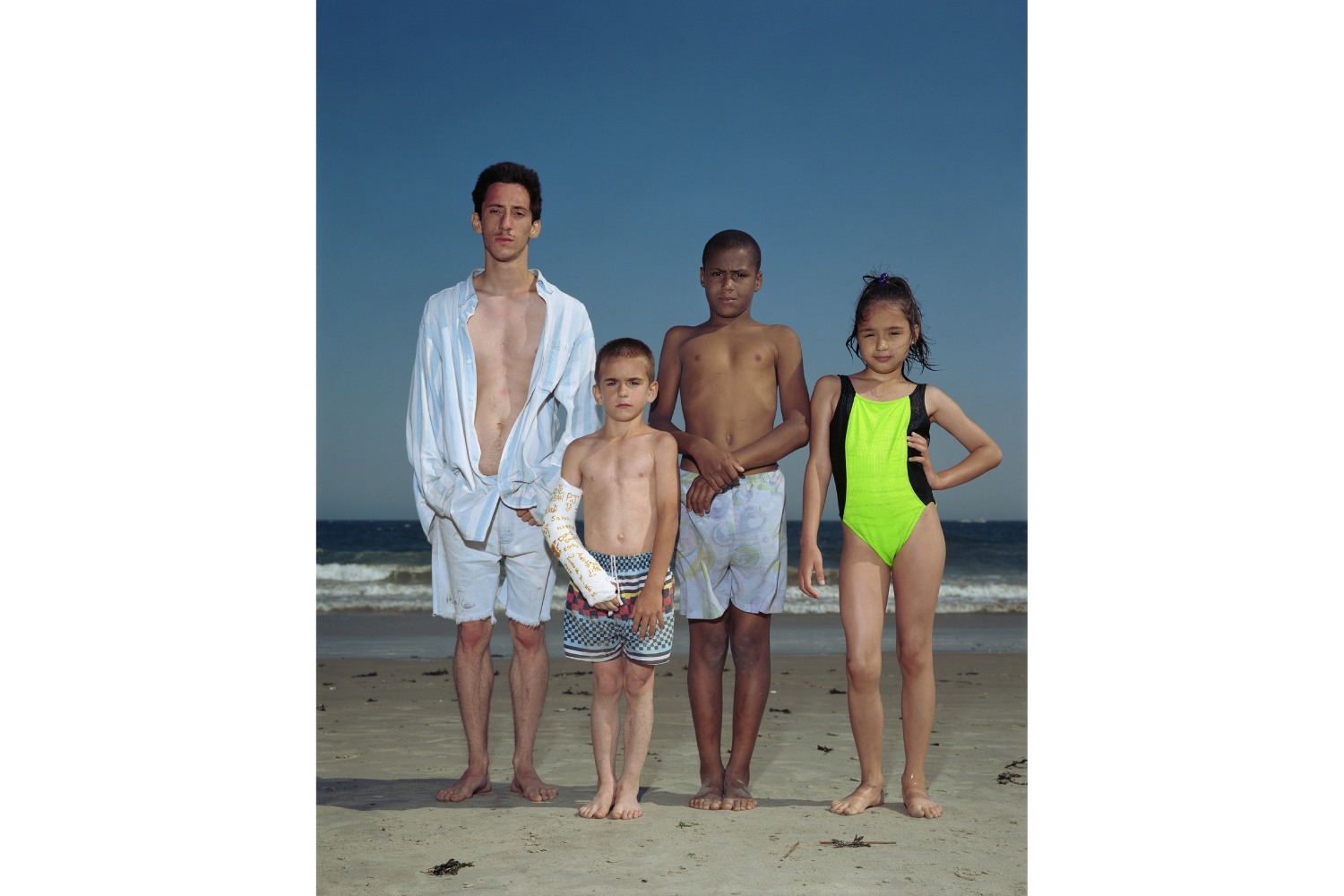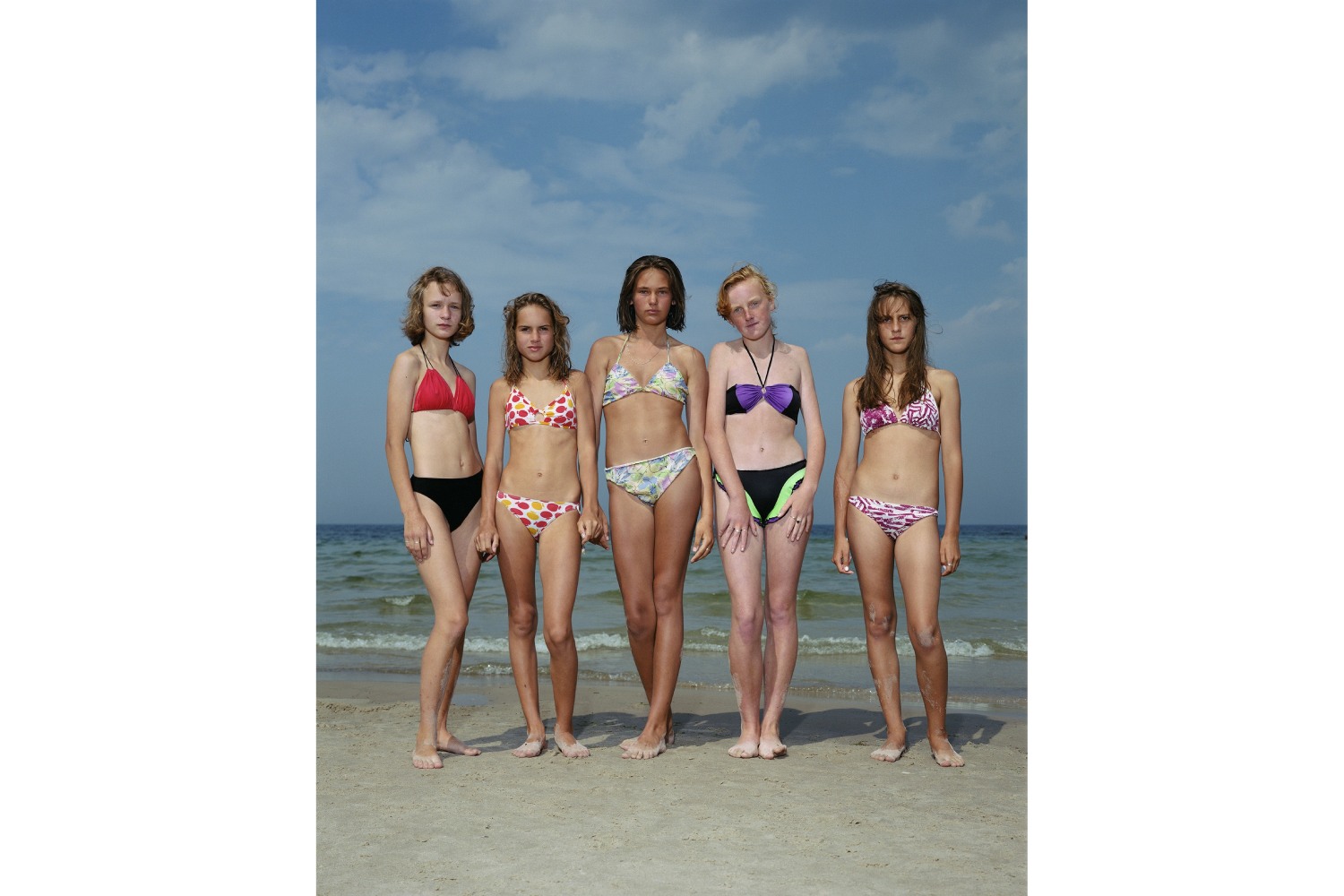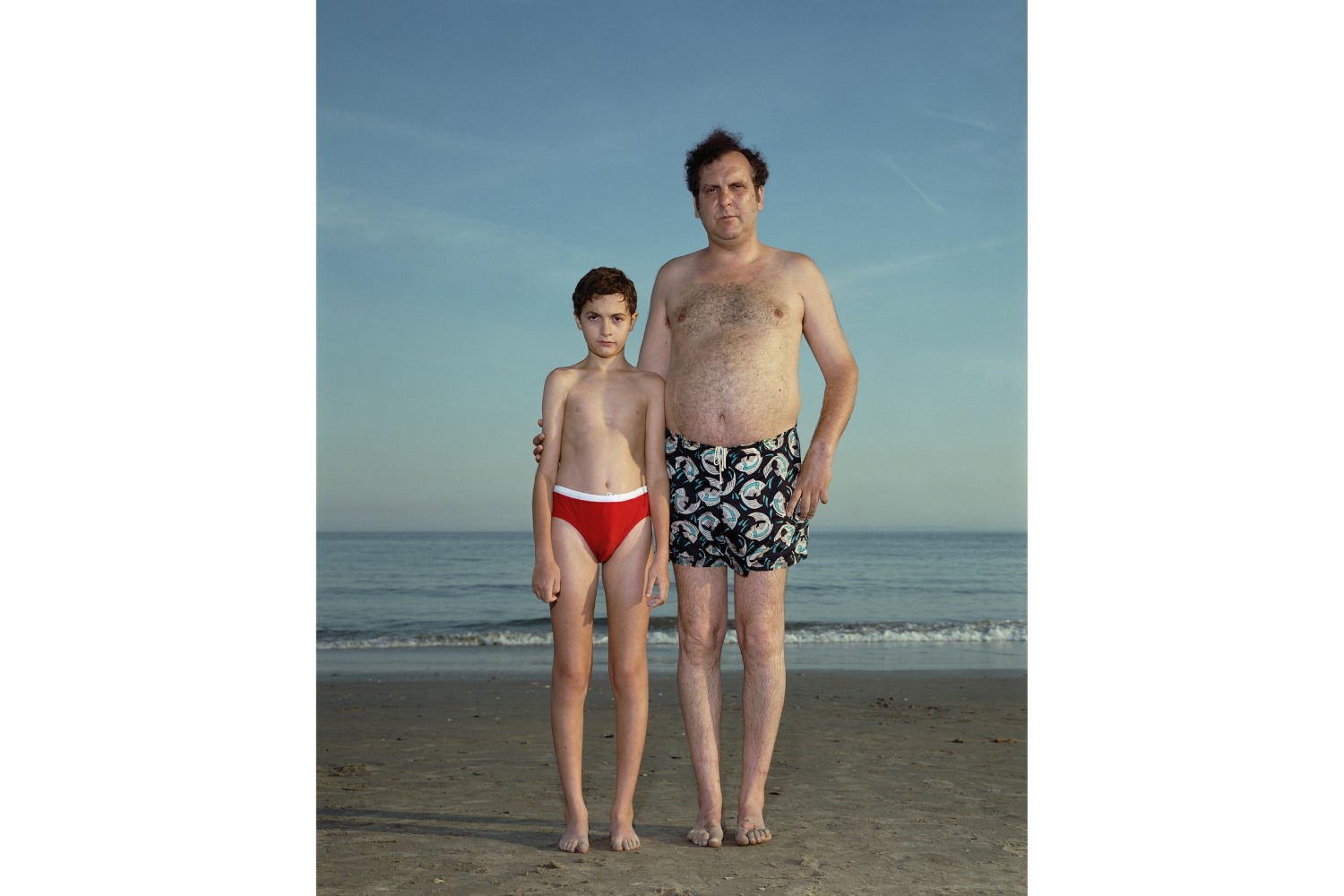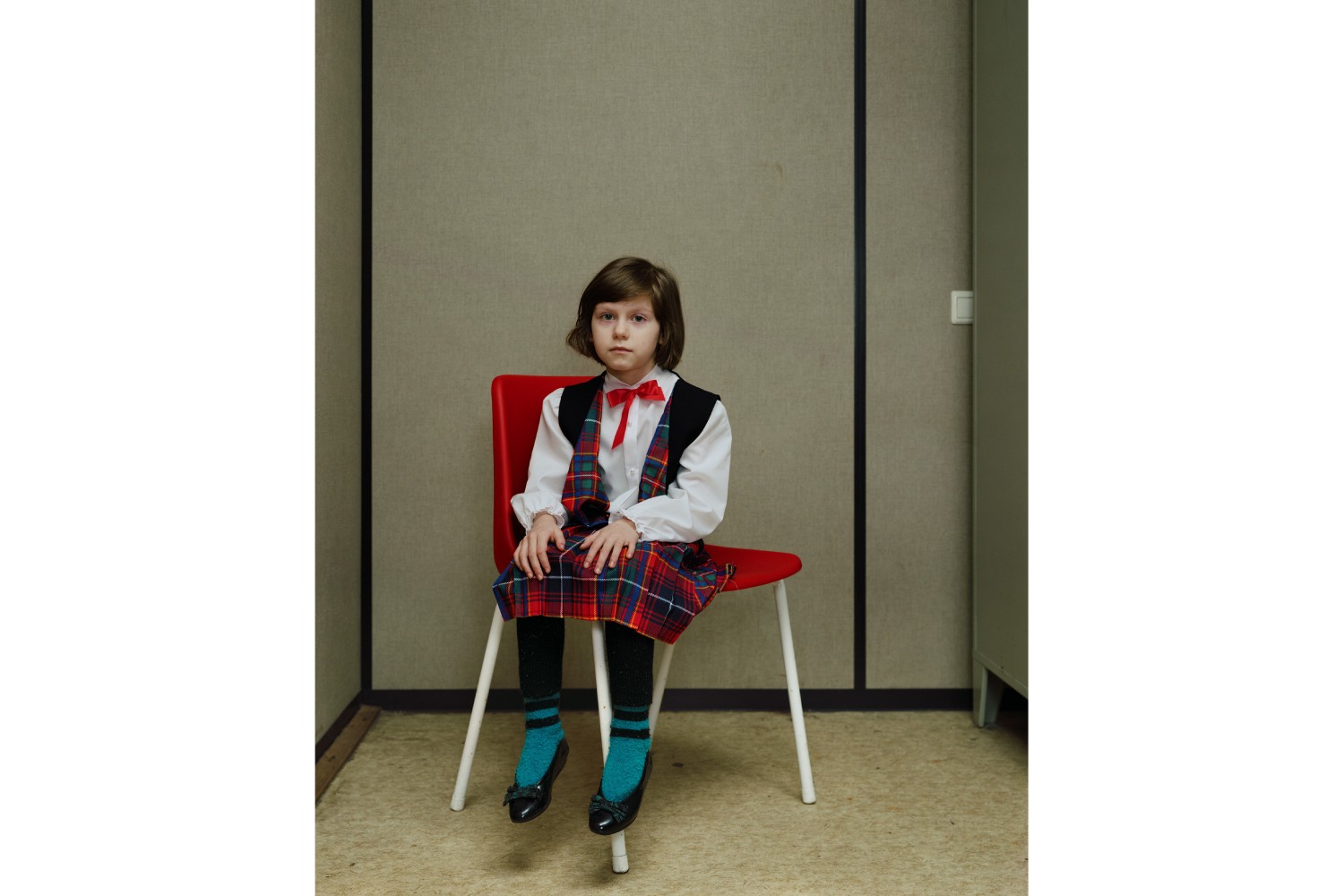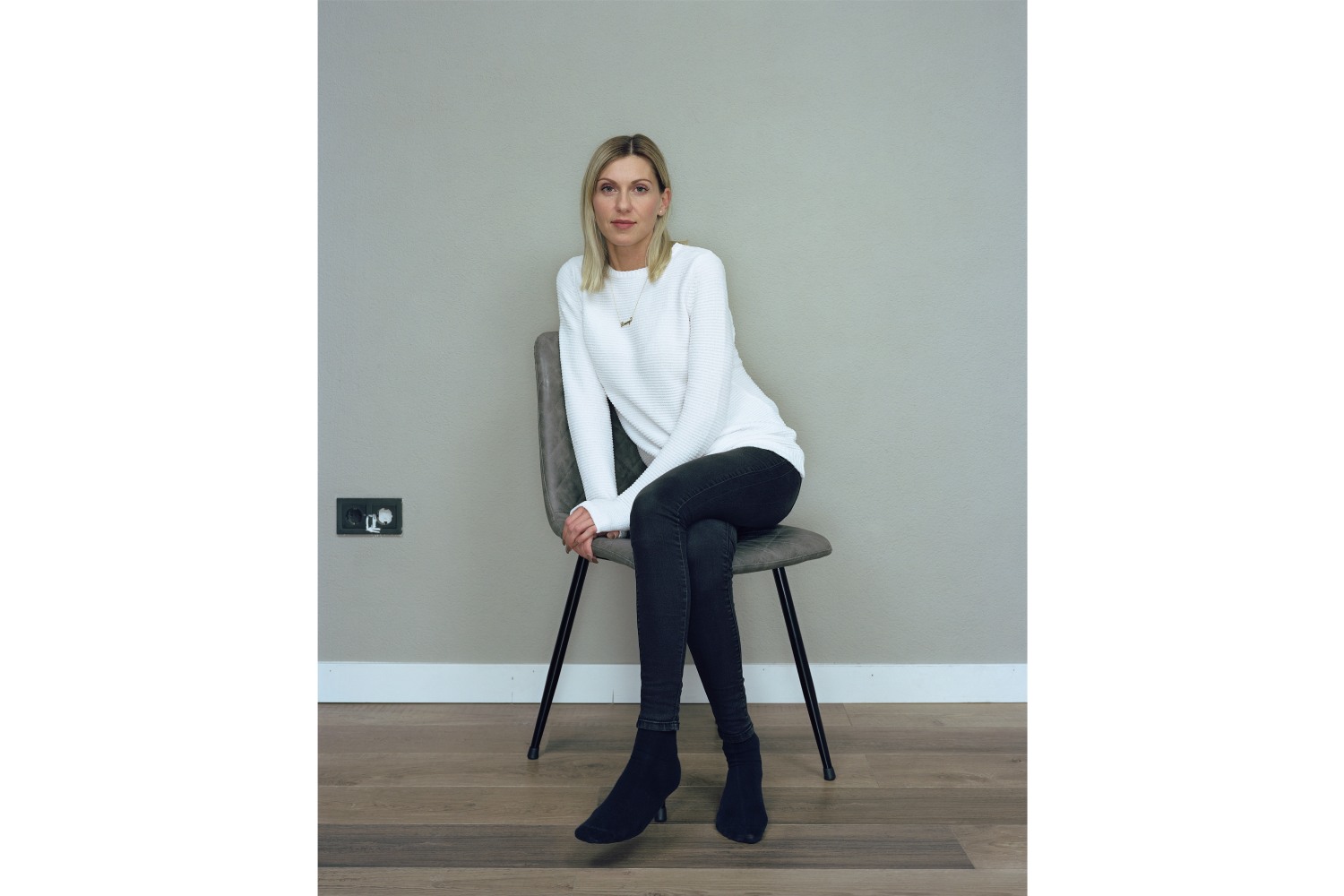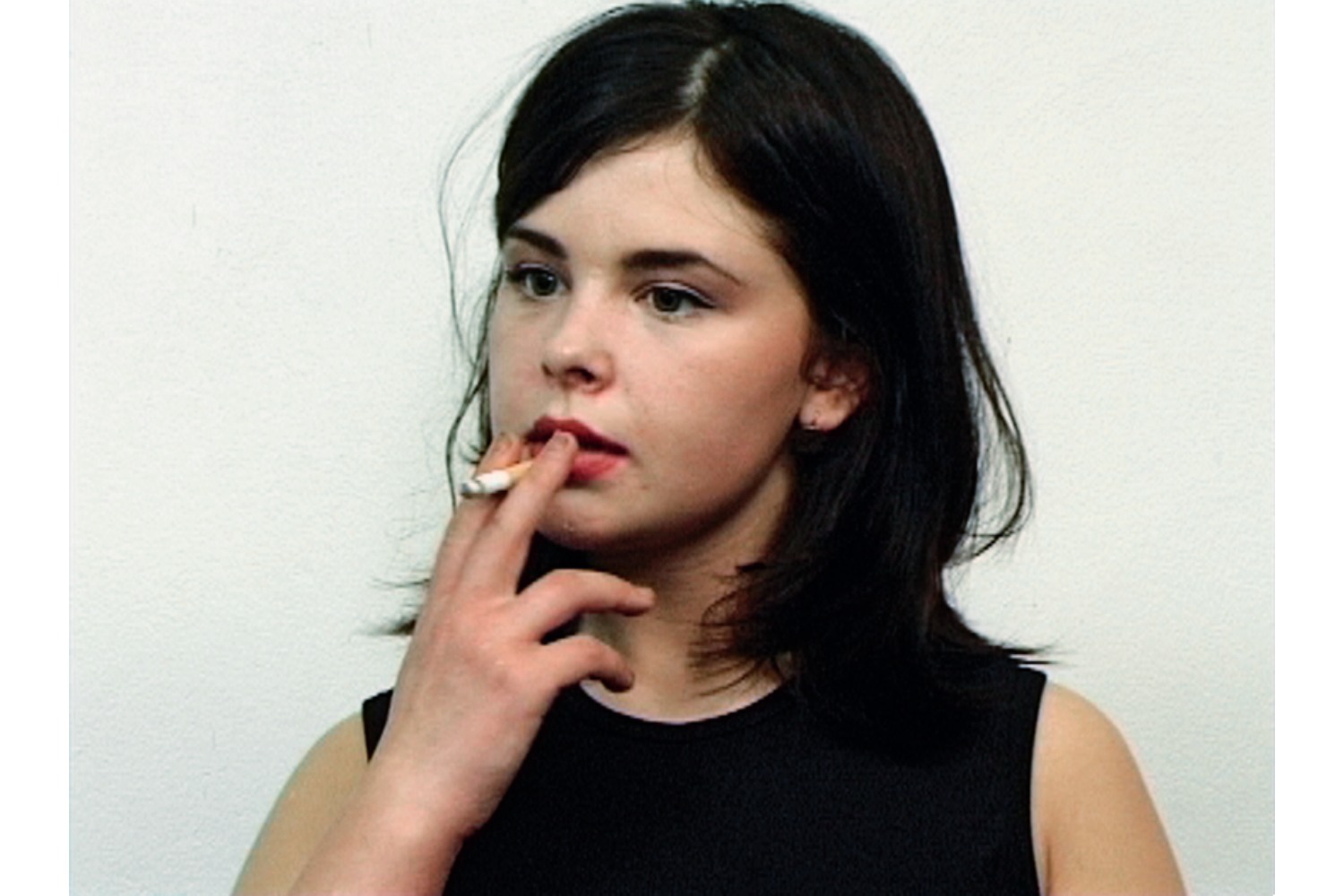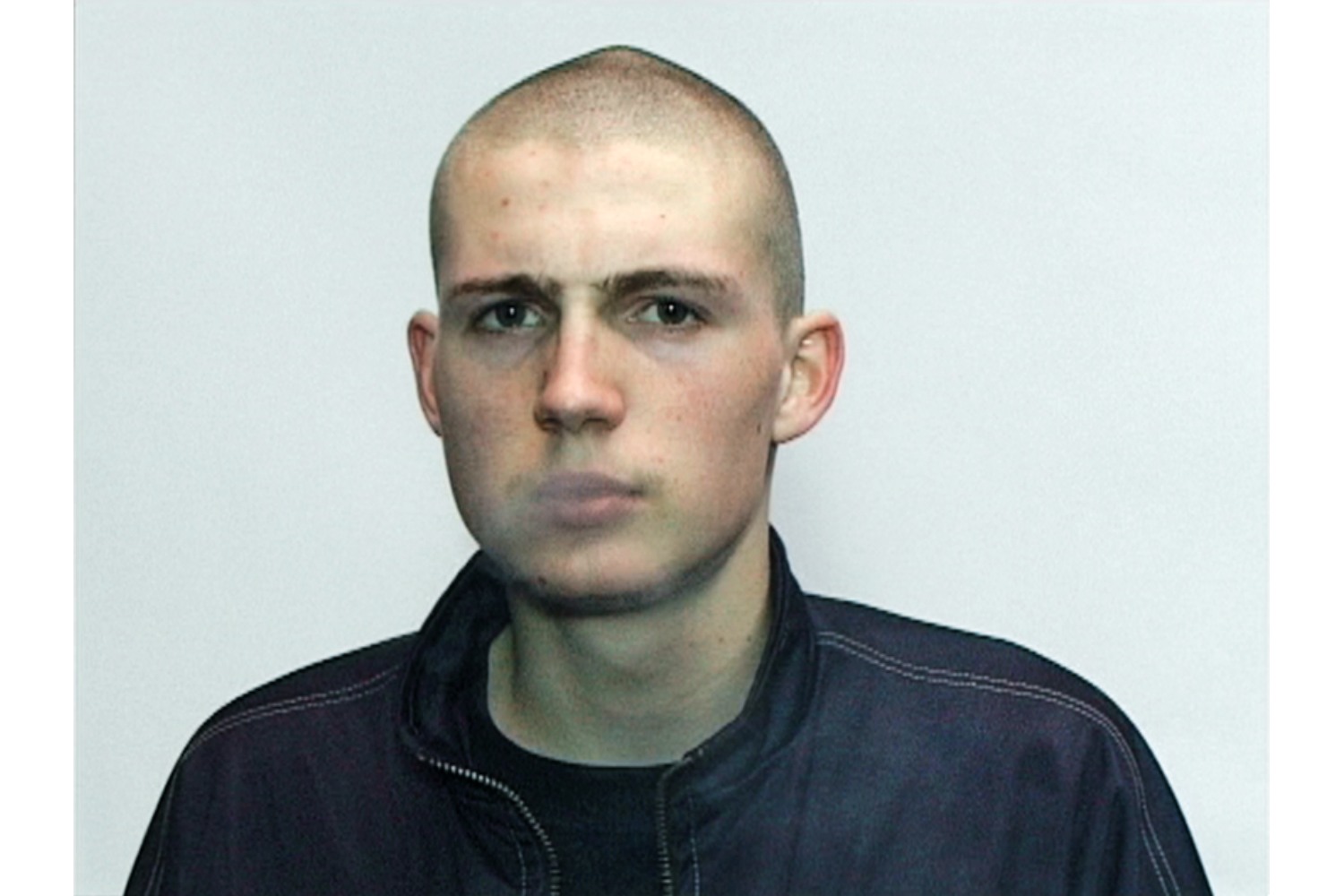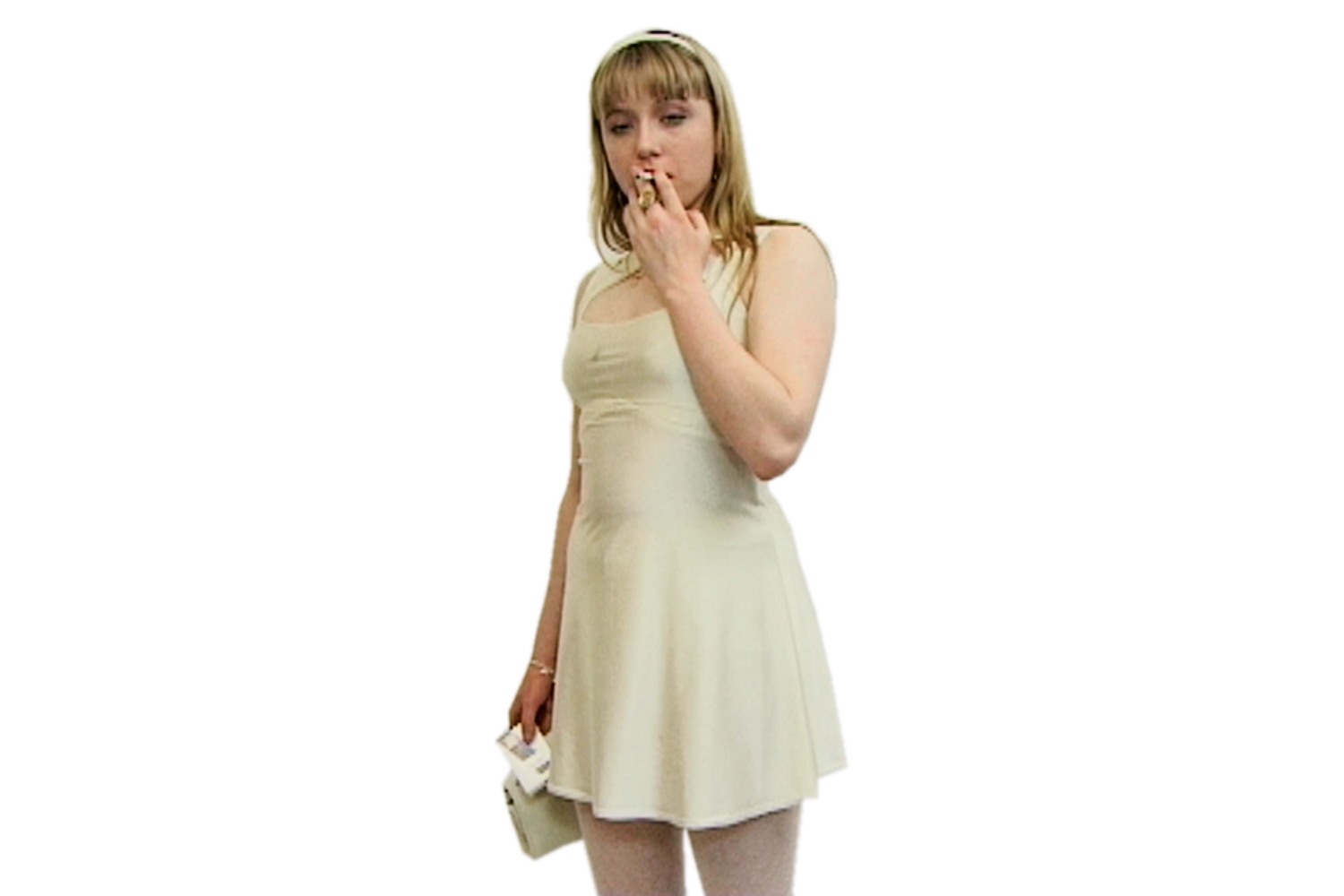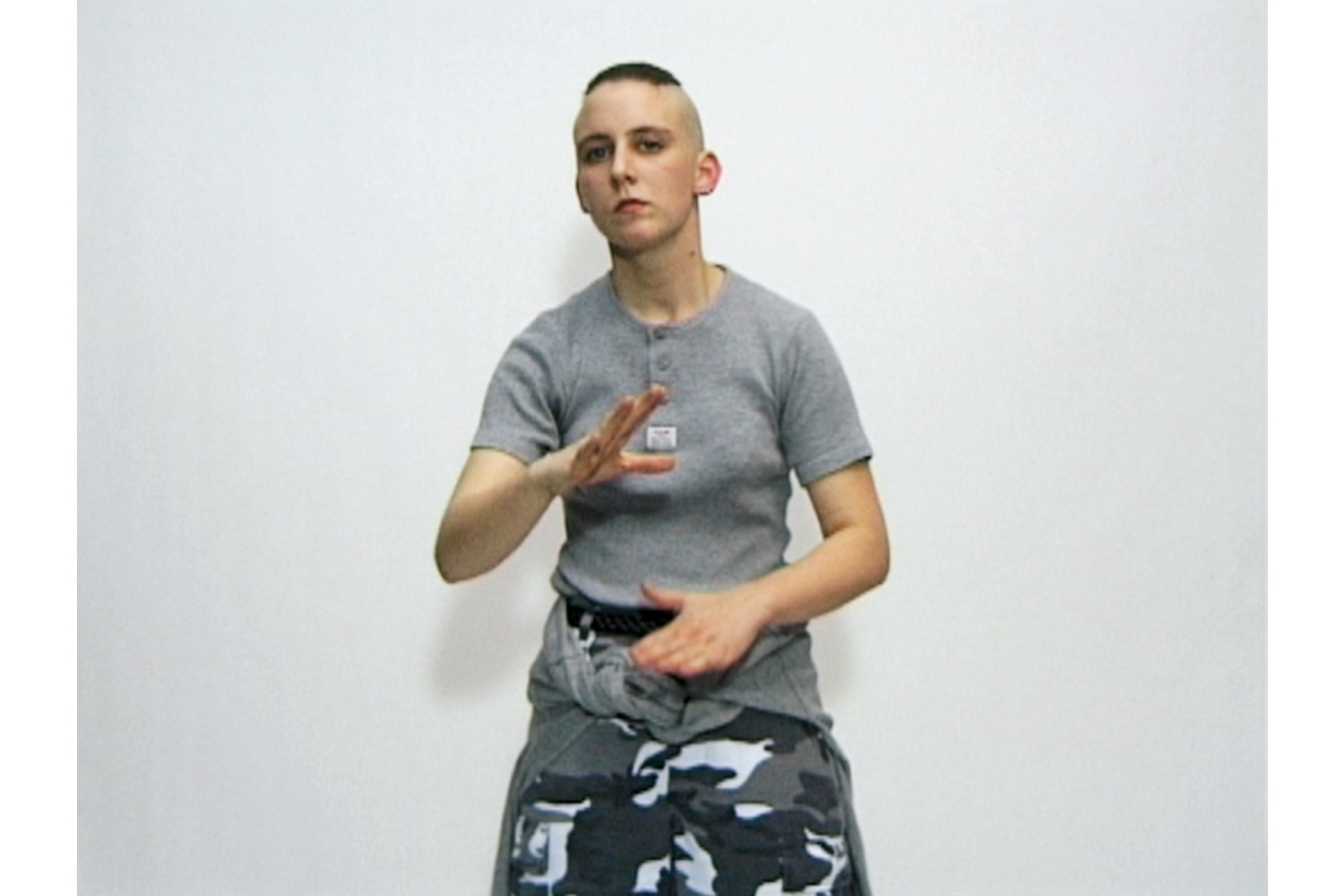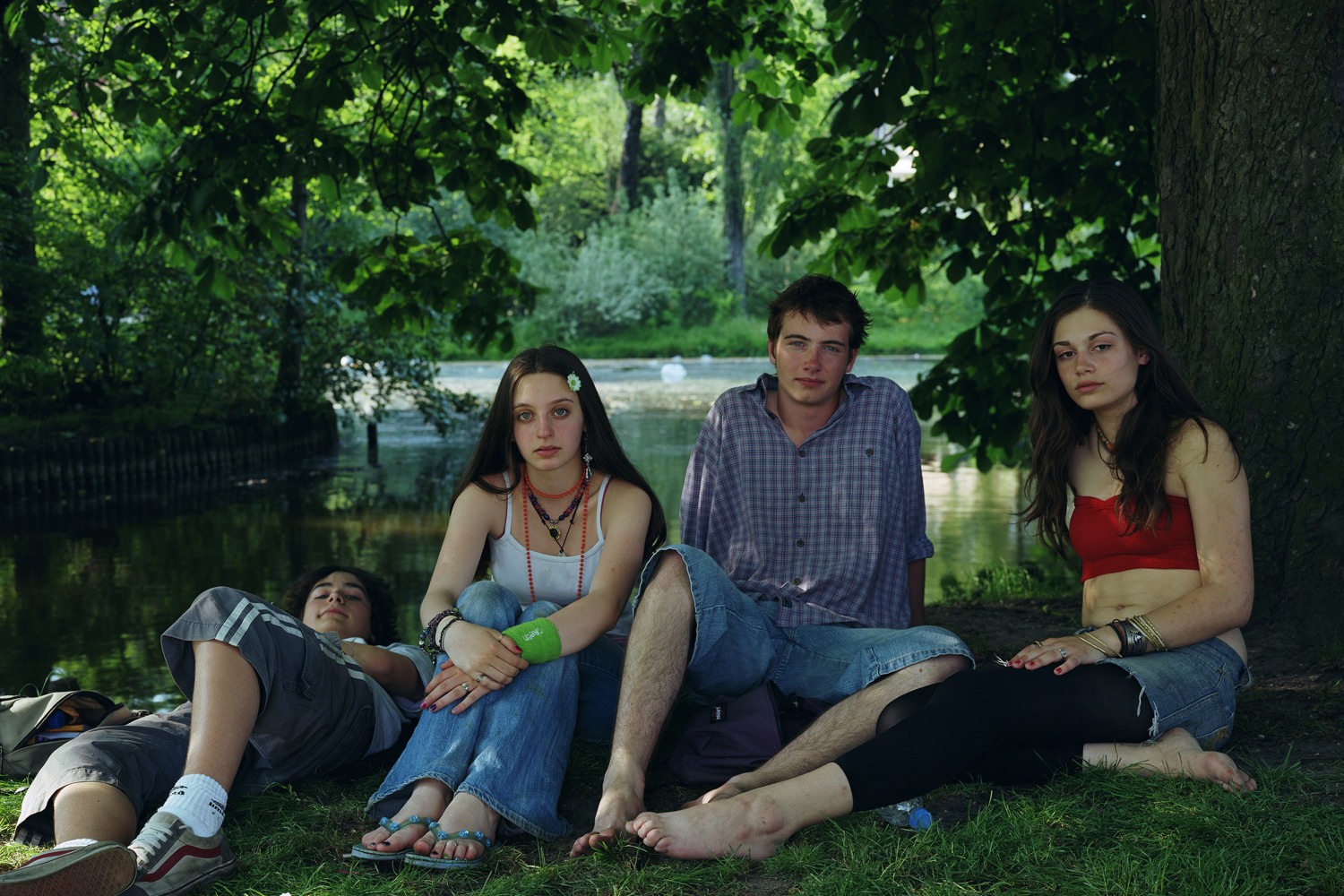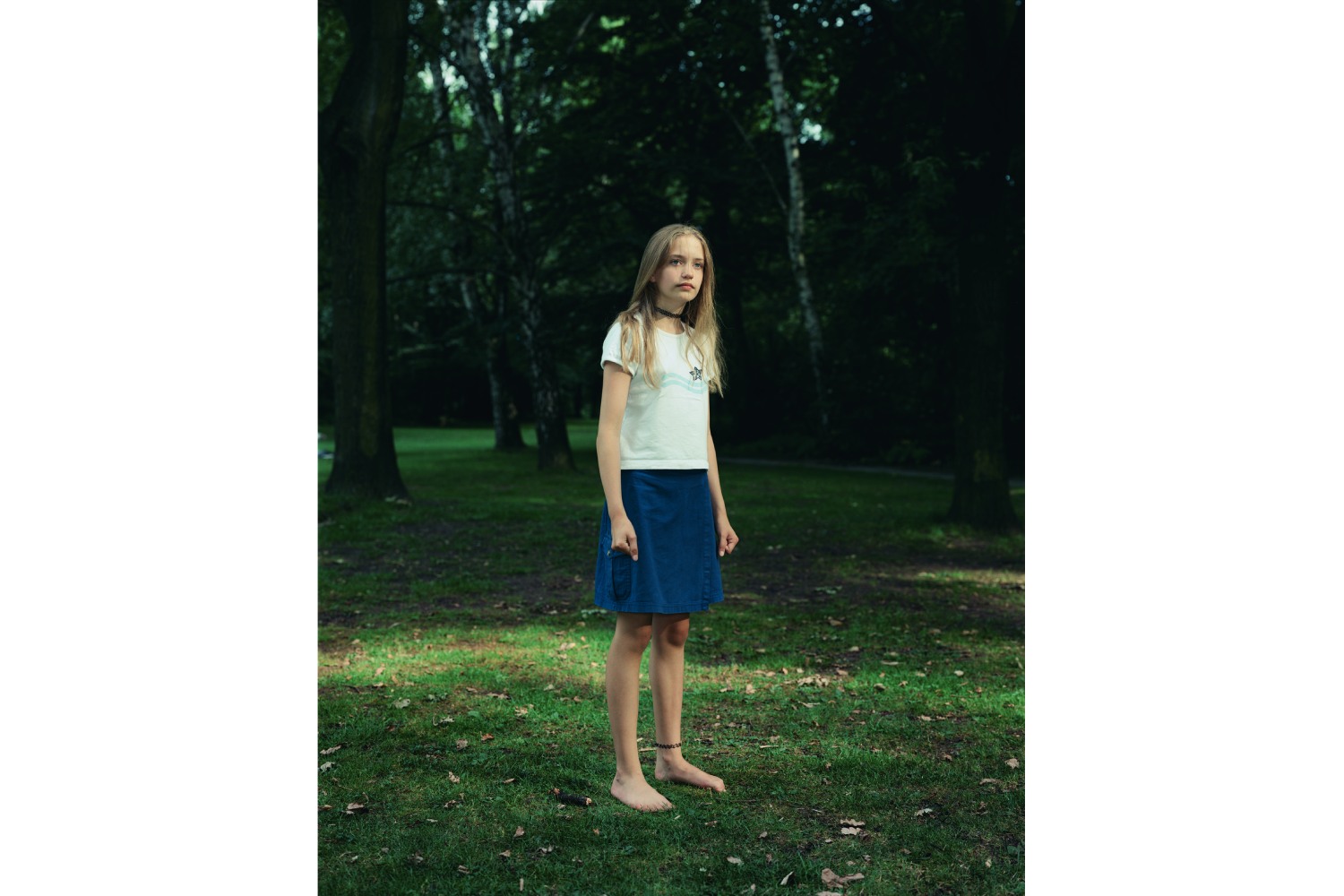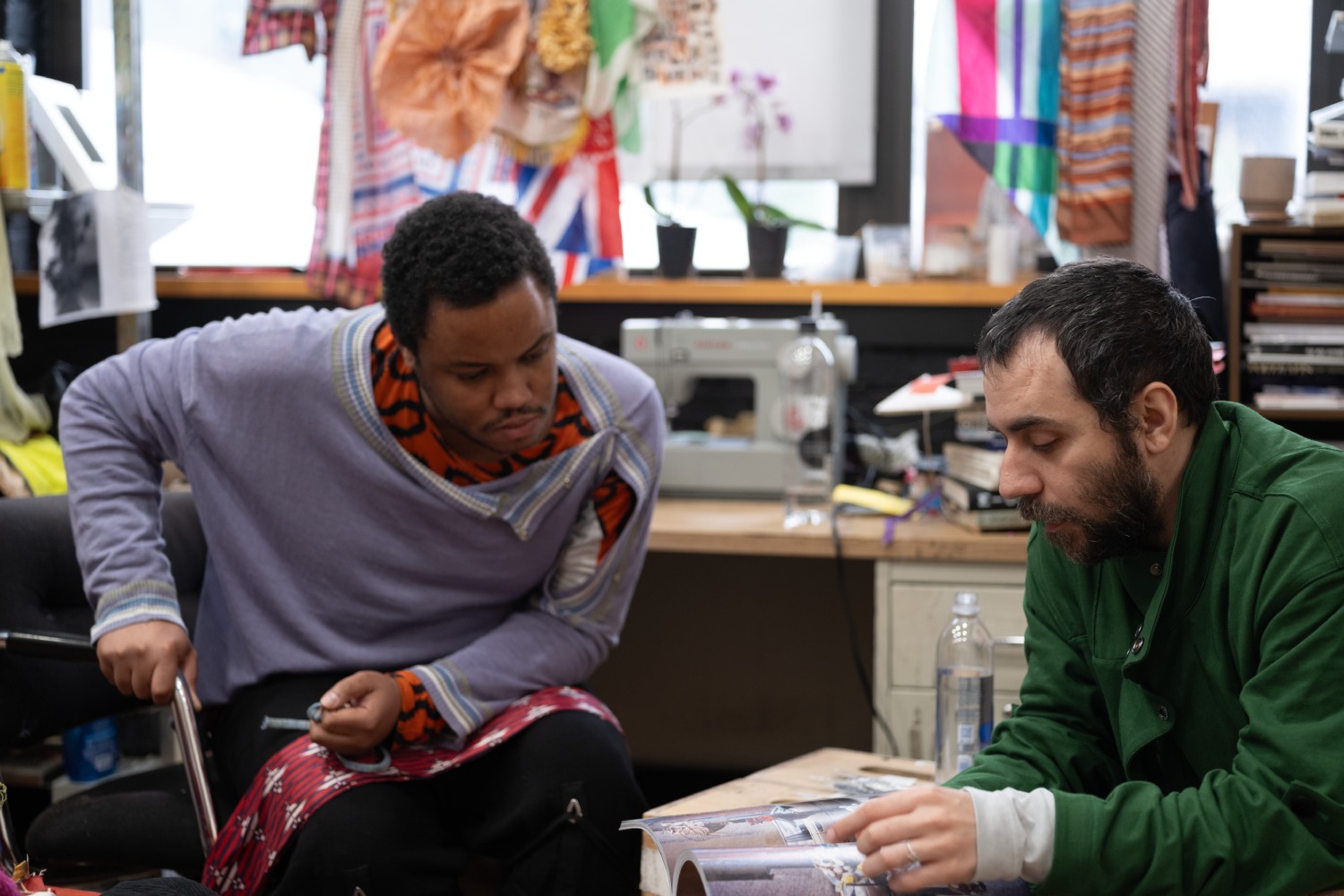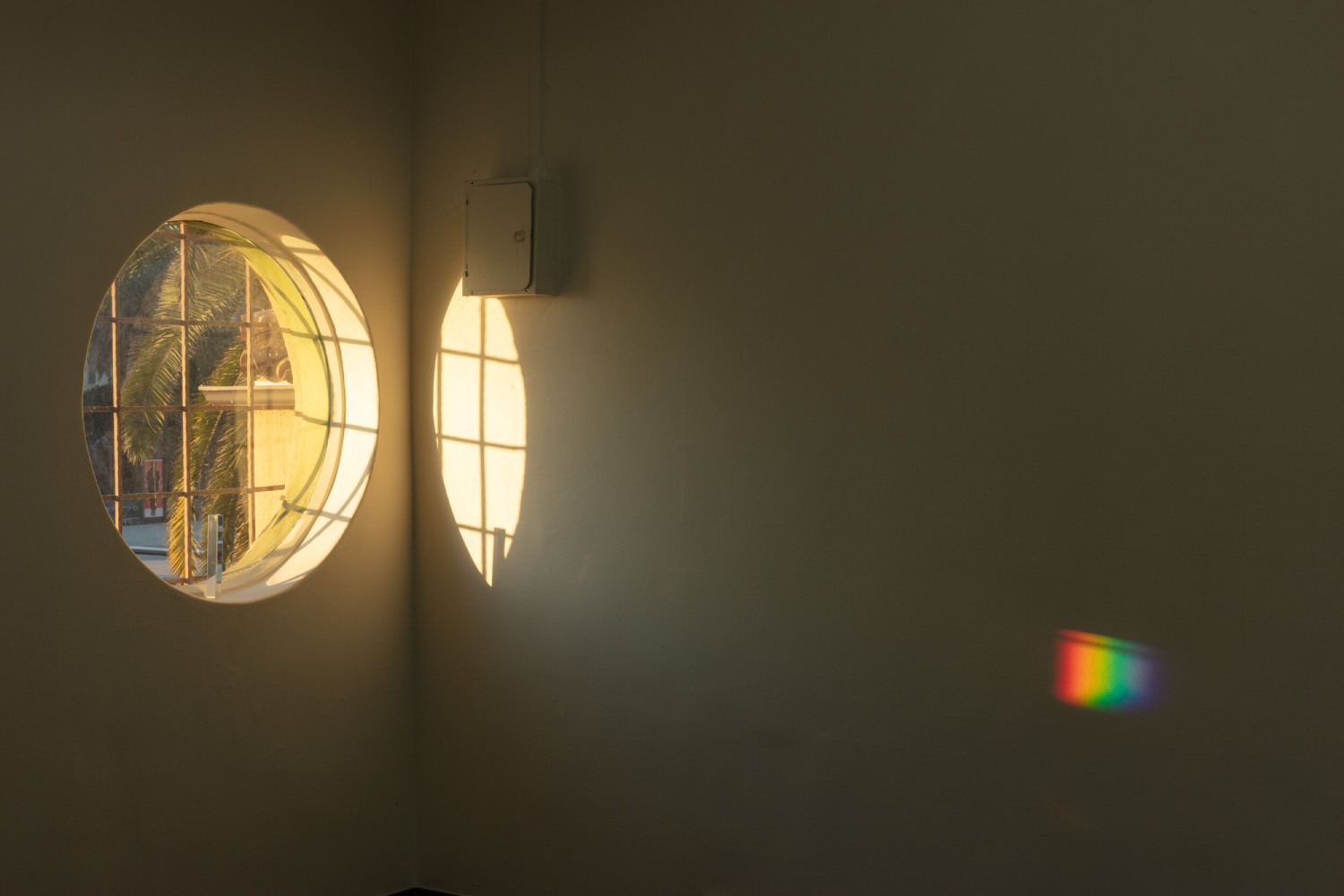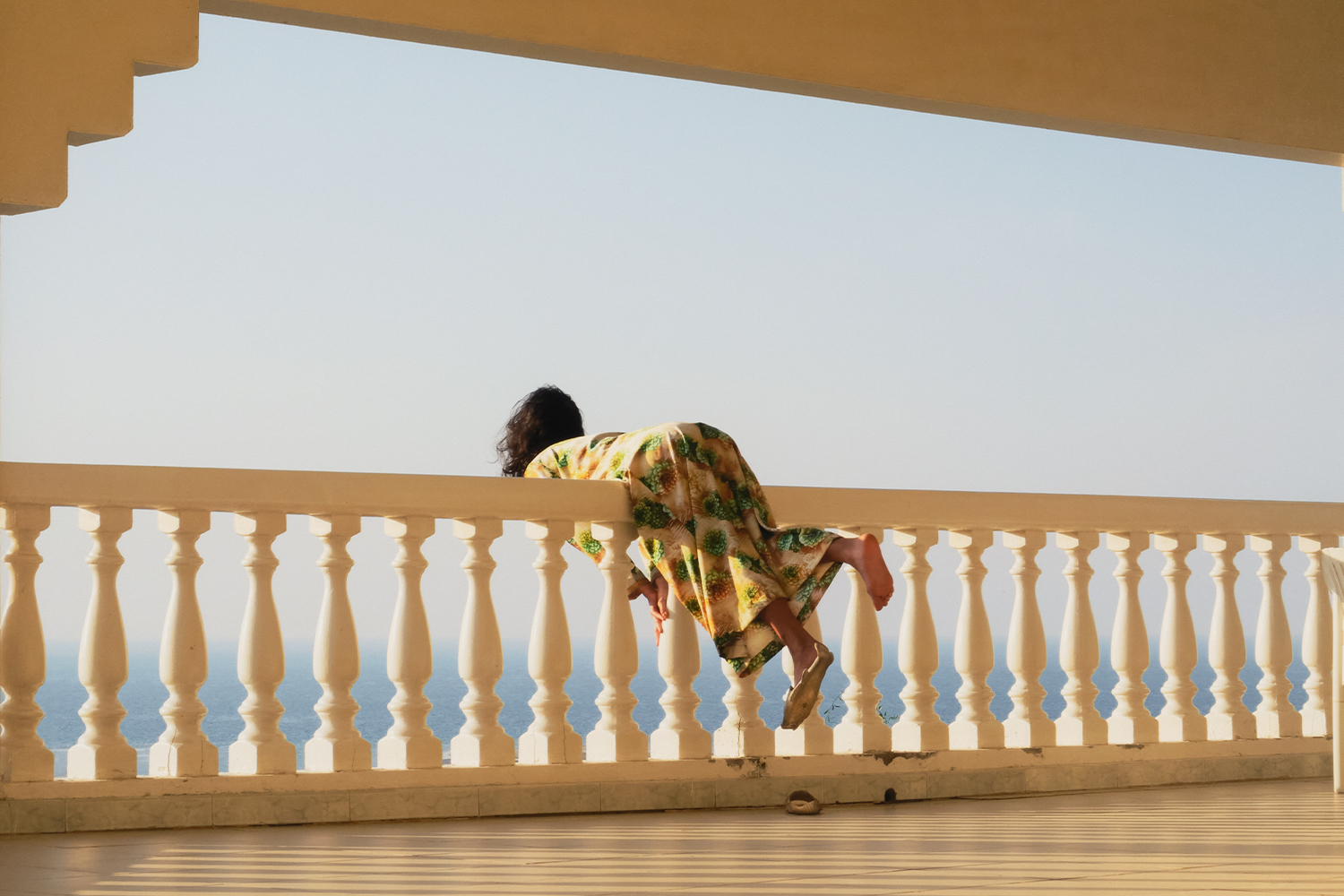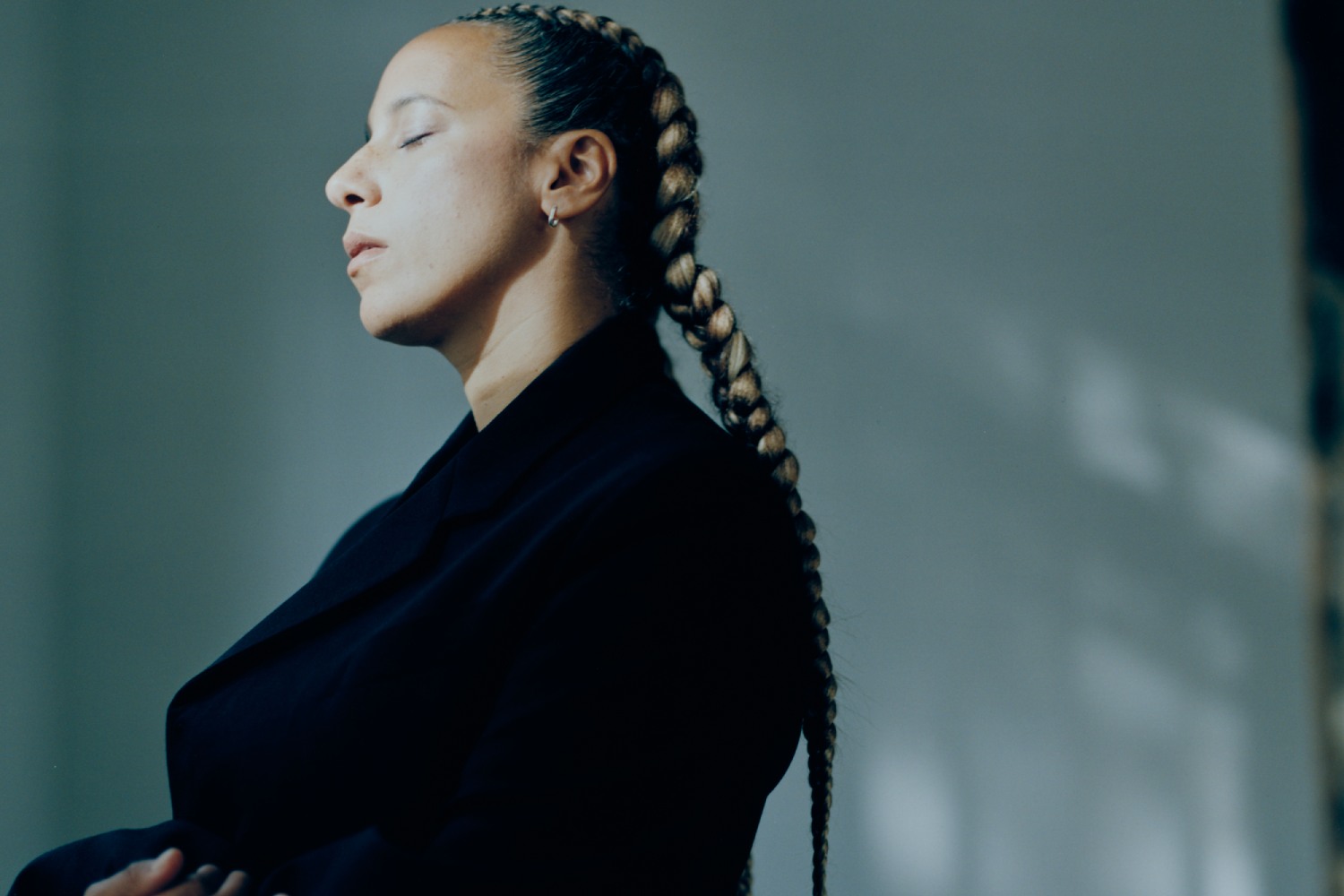Dutch photographer Rineke Dijkstra’s recent three-channel video installation Night Watching (2019) offers one of the most entertaining and compelling examples of the artist’s three-decade-long portraiture practice. Inspired by fellow Dutch portraitist Rembrandt van Rijn’s canonical Militia Company of District II under the Command of Captain Frans Banninck Cocq (1642) — long recognized by its more common diminutive, The Night Watch — Dijkstra’s thirty-minute video is a self-reflexive exercise in art-splaining. Originally commissioned by the Rijksmuseum and recorded over six intimate evenings, the video captures fourteen different groups of museum visitors as they examine and discuss Rembrandt’s masterpiece from various historical, formal, and personal perspectives. Due to the location of Dijkstra’s camera, which roughly simulates the painting’s point-of-view, Rembrandt’s work never appears in the video. However, the participants presumably look at the painting while discussing it, thus allowing the video’s viewers to study these strangers’ faces as they examine the historic faces of Rembrandt’s work. All of which produces an uncanny, mirroring effect.
Small talk is an important element in Night Watching — the descriptions, theories, and reveries offered about the painting are not, after all, sourced from Baroque art historians or Dutch history scholars but rather from school children, retirees, international tourists, and businessmen. It is not what they say so much as how they say it: gazing (at the painting), gesturing (to each other), and making expressions with their faces — these incidental performances are what most interest Dijkstra’s camera. In their animated conversations, silent ponderings, affected expressions, and nervous laughter, Dijkstra’s fourteen group portraits mirror something of the quotidian mystery of Banninck Cocq’s civic guard in Rembrandt’s roisterous masterpiece. In both the original work and its mirroring opus, what remains most alluring for the viewers of The Night Watch and for the viewers of Night Watching is the mirroring of faces.
Dijkstra’s employment of Rembrandt in Night Watching is particularly apposite. From the beginning of her career in the early 1990s as the celebrated photographer of the “Beach Portraits” (1992–98) series, Dijkstra has often been described as the consummate Dutch portraitist while regularly earning comparisons to Rembrandt and other Old Masters such as Johannes Vermeer and Frans Hals. In the “Beach Portraits,” she used a four-by-five field camera on a tripod to capture images of children and teenagers, both alone and in groups, on various beaches across
the world. The singularity of their attire, gestures, and even bodies proves contemplative, melancholic, nostalgic, and sometimes even disarming. Despite these differences, it is the shared mystery in their faces, posed in a frontal gaze and rarely smiling, that resonates most across the entire series. Like her seventeenth-century Dutch Baroque forebears, there is no doubt that Dijkstra maintains a compositional fascination with human physiognomy.
Although the Dutch did not invent the painted portrait nor the form’s infatuation with the psychology of the face — that honor, according to media theorist and philosopher Peter Sloterdijk, goes to Italian, Late Gothic painter Giotto — they did vastly expand the lexicon of facial representations as well as popularize the portrait as the genre of the middle-class and ordinary citizen within unheroic scenes of the everyday and the domestic.1 Dijkstra’s “Beach Portraits” and later series like “Almerisa” (1994–ongoing) and “Tiergarten” (1998–2000), as well as video installations like The Buzz Club, Liverpool, UK / Mystery World, Zaandam, NL (1996–97), plumb the same genres of portraiture and everyday life. Whether at the seashore, asylum center office, or disco, Dijkstra’s portraits consistently merge the remarkable with the unremarkable, the formal composition with the aura of an improvisatory snapshot, and the singular suppleness of pubescent bodies with serialized, sometimes generic backgrounds. Her images frequently prioritize minimal surroundings, rebuking the Dutch Baroque tradition’s valorization of clutter and thing-ness, but Dijkstra’s use of large-format photographs, lit by strobe or electronic flash, accentuate the rosy complexions and textural details of her subjects’ faces, approaching a painterliness not unlike the Dutch Masters.
In her essay “Empathic Mirroring: Transition and Transformation in Rineke Dijkstra’s Portraits” (2017), photography scholar Jennifer Blessing links Dijkstra’s recurring use of portraiture to the artist’s fascination with the feeling of empathy. Although the term “empathy” is now in common parlance, promoted over several decades by self-help and wellness culture, its roots are relatively recent. Blessing traces it back to the early twentieth-century German neologism Einfühlung (“in-feeling” in English), popularized by aesthetician and psychologist Theodor Lipps. For Lipps, empathy is not simply an emotional judgment but an aesthetic one. Blessing, referencing Lipps, describes it as an “‘objectivated self-enjoyment,’ which […] breaks down the boundary between object and self.”2 In Lipps’s taxonomy of artistic representations, “the highest evocation of [empathy] arises from the sensuous appearance of the human being […] especially the eyes and mouth,” which Blessing observes in Dijkstra’s continued desire to “look into the face of another.”3
This desire for interfacial communion is literalized in Dijkstra’s particular method of photographing her subjects. Because of her use of a mirrorless, analogue camera, Dijkstra only sees a 180-degree rotated (or upside-down) image of her prospective photograph through the viewfinder.
For this reason, she has said in various interviews that she always steps away from the camera and tripod to look directly at her subject(s) before completing the shot. The extended moment of looking has both a logistical and affective motive: it allows Dijkstra a more accurate preview of the photograph and an interfacial exchange with her subject(s), in which she offers them more intimate attention and instruction. This produces two further consequences: it establishes a sense of empathy between the photographer and subject(s), and it also suspends the latter’s efforts to pose, that is, to make oneself into an ideal image for the camera. In standing alongside the mirrorless camera, Dijkstra herself serves as a sort of mirror to her subject(s), heightening their awareness of being looked upon simultaneously by a mechanical and human gaze, thus producing a dissonance between their photographed selves and inner-selves, not unlike that of a child experiencing the Lacanian mirror stage.4 Perhaps for this reason, Dijkstra’s photographs often evoke feelings of quiet contemplation and awkward transition or unease, according to art historian Erika Daniela Ortiz.5 Blessing also points out a related, gendered component to Dijkstra’s portraiture, arguing that the photographer’s special talent at “identifying and mirroring the emotional state of others” can sometimes resemble a maternal act that mirrors the viewer’s empathic engagement with the photograph.6
As Dijkstra explained of her subjects in a 1998 interview, “In a way I feel that they are my children, that I have to take care of them and make sure they are shown in the right context.”7 Her preference for girls and young women is evident throughout her oeuvre, from the unnamed girls in “Beach Portraits,” the eponymous adolescent in “Almerisa,” the teen club goers in The Buzz Club, Liverpool, UK / Mystery World, Zaandam, NL, the female siblings in Emma, Lucy, Cecile (Three Sisters 2008–2014) (2016), and the young ballerina in Marianna (The Fairy Doll) (2014), among others. Dijkstra has also previously stated that she sometimes continues to communicate with her subjects years after initially photographing them, an empathic practice that produced durational series like “Almerisa” and “Three Sisters,” in which she intermittently photographed the same girls for over a decade. In light of this, perhaps Dijkstra’s photographs are not only a record of her subjects but also an accounting of her maternal empathy for them, as if she sees herself in the faces of these young girls who are experiencing the awkward, and sometimes painful, metamorphosis from childhood to adulthood. Indeed, in Dijkstra’s portraiture, the mystery of the face and the themes of mirroring and reflection are inextricably bound. In this way, her work shares another recurring motif with her Dutch Baroque forebears, who often included images of looking glasses and reflections, as well as trompe l’oeil devices like foreshortening, quodlibet, and anamorphosis in their portraits, still lifes, and scenes of everyday life. Among these visual tricks, the most striking was the use of mise en abyme, in which the image of the mirror is angled directly toward the picture plane as if to reflect the imagined face of the artist/viewer. In the vanitas still life, these mirrors are typically the focal object, while in others, they are accompanied by human figures, often young women, some of whom also appear to break the picture plane and stare at the viewer. Examples can be seen in the pre-Baroque Flemish painter Jan van Eyck’s The Arnolfini Portrait (1434) as well as other portraits and still lifes by Paulus Moreelse (Girl at the Mirror, 1632), Cornelis de Man (A Game of Cards, with the Woman Reflected in a Mirror, c. 1655–65), and Pieter Claesz (Vanitas with Violin and Glass Ball, 1628). These painters were, much like Dijkstra, fascinated by the act of looking and the mirroring effect of looking at someone who looks. The popularity of such tricks in the Dutch Baroque was partly due to the technical advancement of flat mirrors, so-called “looking glasses,” by the seventeenth century. Produced in the workshops of Murano and Paris, pocket-sized mirrors and larger, more expensive wall mirrors, like those produced for Louis XIV’s Galerie des Glaces at Versailles, were highly coveted by the upper classes of Europe and served as everything from vanity objects for courting to accents for book covers and tapestries. Stranger still, they were also seen by some as diviners of the future and absorbers of souls — such superstitions were holdovers from the Middle Ages, when most reflective surfaces were distorted and viewed as the domain of the devil. In fact, the large-scale improvements to flat mirrors throughout the late seventeenth and eighteenth centuries were emblematic of the Enlightenment’s discursive emphasis on clarity and transparency and, along with the Baroque writings of Johannes Kepler, René Descartes, and Isaac Newton, helped to modernize popular conceptions of light and optics. Flat mirrors also offered new techniques of portraiture putatively used by Rembrandt and Vermeer to produce more realistic images of the face.8
But why is such an obscure, decorative history critical to the work of a contemporary photographer like Dijkstra? Dutch theorists René ten Bos and Ruud Kaulingfreks’s essay “Life Between Faces” (2002) suggests how modern depictions of faces like those in Dijkstra’s portraits are deeply indebted to the cult of the mirror. As they argue, “only a culture that would become fascinated with mirrors could develop the idea that the face is also something that might be related to the self rather than to the other. In a culture of mirror owners, people not only have a face for others but also for themselves.”9 Ten Bos and Kaulingfreks quote extensively from Sloterdijk’s Bubbles: Spheres I (2011), in which the latter argues that interfaciality in the Middle Ages had been characterized by a “hothouse” of eye contact that called humans into mutual being through a form of contagion.10 Such contagion was meant quite literally, as the act of reciprocal looking was thought to produce vaporized blood that radiated from one human heart to another through the thin membranes of the eyes — or so theorizes Florentine neo-Platonist Marsilio Ficino in his treatise on love De amore (1484). “[Faces] flourish[ed] in an interfacial circle of mutual openness,” ten Bos and Kaulingfreks write.11 But this facial openness was transformed by the modern era into the contemplative expressions of the solitary face, with its “cooled-down and overpublicized inner worlds.”12 The proliferation of “mirrors ensured that the subject was no longer accessible for others,” ten Bos and Kaulingfreks conclude.13
Dijkstra’s desire to reveal “what we don’t want to show anymore but still feel” throughout her oeuvre perfectly encapsulates modernity’s cool, interiorized face.14 By isolating her subjects from their environments — and even their shadows — and concentrating her camera on a pose, gesture, or expression, she captures in their faces the ultimate mystery of interiority. Rather than invoking an erotic hothouse, or “sunburst center,” as art critic Jerry Saltz once described her work, Dijkstra’s portraits are often distant, even wintry, depictions of faces looking out while simultaneously turning inward, where the “stoic individual resides […] a point-subject who lives out the fantasy of his or her own intimacy to which others have no access,” according to ten Bos and Kaulingfreks.15 It is no wonder, then, that Dijkstra takes such care in the act of photographing — she is not recording a mere portrait of the face but the very soul of her subject hiding just beneath its surface. With this history in mind, Dijkstra’s selection of Rembrandt for Night Watching suddenly appears all the more ambitious and knowing. Rembrandt had famously produced more self-portraits than any other artist — at least eighty drawings, paintings, and etchings of his face are known — including a partial depiction of himself peering out from the background of The Night Watch as if waiting to be discovered deep within the painting’s interior. Rembrandt, like Dijkstra, seemed to implicitly understand the fascination with the modern face, the mirrored face, with its seemingly endless reflections and inward mysteries. So, what Dijkstra attempts to capture in her video of inquisitive faces yearning to decipher the dozens of faces in Rembrandt’s masterpiece is precisely the birth of this modern face, what it means to look for the mystery beneath its surfaces and to sense its uncanny, mirroring gaze looking back into them.

